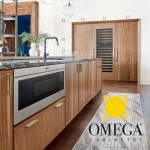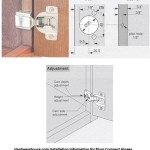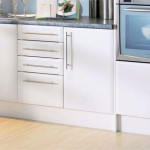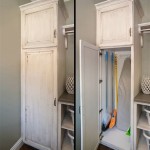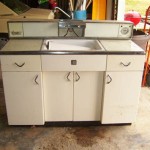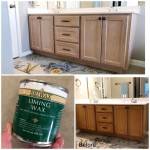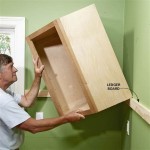Kitchen Cabinets in Rhode Island: A Comprehensive Guide
Kitchen cabinets are a fundamental element of any kitchen design, impacting both the aesthetic appeal and functional efficiency of the space. In Rhode Island, homeowners have a diverse range of options available when selecting kitchen cabinets, from local manufacturers offering custom solutions to national brands distributed through retail outlets. This article provides a comprehensive overview of kitchen cabinets in Rhode Island, exploring the different types, materials, installation considerations, and factors influencing pricing.
The selection process for kitchen cabinets can be complex, requiring careful consideration of various factors. Homeowners must balance their desired aesthetic with practical needs, such as storage capacity, durability, and budgetary constraints. Understanding the nuances of cabinet construction, material properties, and installation techniques is crucial for making informed decisions and achieving a satisfactory outcome.
Rhode Island's geographic location exposes kitchens to specific environmental conditions, including humidity and temperature fluctuations. These factors can affect the longevity of certain cabinet materials and finishes, necessitating careful consideration of material selection. Furthermore, the architectural styles prevalent in Rhode Island homes, ranging from historic Colonial to contemporary designs, influence the aesthetic choices for kitchen cabinets.
Types of Kitchen Cabinets
Kitchen cabinets are broadly categorized into three main types: stock, semi-custom, and custom. Each type offers varying levels of customization, price points, and lead times.
Stock Cabinets: Stock cabinets are pre-manufactured in standard sizes and configurations. They are typically available at home improvement stores and online retailers. Stock cabinets offer the most affordable option and are readily available, often allowing for immediate purchase and installation. However, the limited range of sizes and styles may restrict design flexibility. Stock cabinets frequently utilize lower-cost materials, such as particleboard or melamine.
Semi-Custom Cabinets: Semi-custom cabinets provide a middle ground between stock and custom options. They are manufactured with some degree of customization, allowing homeowners to modify dimensions, door styles, and finishes within a pre-defined range. Semi-custom cabinets offer greater design flexibility than stock cabinets while remaining more affordable than fully custom solutions. Lead times for semi-custom cabinets are generally longer than those for stock cabinets, as they are made to order.
Custom Cabinets: Custom cabinets are designed and built to meet the specific requirements of the homeowner. They offer the highest level of customization, allowing for unique layouts, intricate designs, and specialized storage solutions. Custom cabinets are typically manufactured by local cabinetmakers or woodworking shops. The cost of custom cabinets is significantly higher than stock or semi-custom options, reflecting the labor-intensive nature of the process. Lead times can be extensive, as each cabinet is crafted individually.
Materials Used in Kitchen Cabinets
The materials used in kitchen cabinet construction significantly impact their durability, aesthetics, and cost. Common materials include solid wood, plywood, particleboard, medium-density fiberboard (MDF), and laminate.
Solid Wood: Solid wood cabinets are prized for their natural beauty and durability. Popular wood species include maple, oak, cherry, and walnut. Solid wood is susceptible to expansion and contraction due to changes in humidity, which can lead to cracking or warping if not properly sealed and maintained. Solid wood cabinets are typically more expensive than those made from engineered wood products.
Plywood: Plywood is an engineered wood product made by layering thin sheets of wood veneer and bonding them together with adhesive. Plywood offers superior strength and stability compared to particleboard and is less prone to warping than solid wood. High-quality plywood is often used for cabinet boxes and shelves.
Particleboard: Particleboard is an engineered wood product made from wood chips and resin, pressed together under high pressure. Particleboard is a cost-effective material, but it is less durable than solid wood or plywood and is susceptible to water damage. Particleboard is commonly used for cabinet boxes in lower-priced cabinets.
Medium-Density Fiberboard (MDF): MDF is an engineered wood product made from wood fibers and resin, pressed together under high pressure. MDF is a dense, smooth material that is ideal for painting or applying laminate. MDF is less prone to warping than solid wood and provides a stable surface for finishes. It is commonly used for cabinet doors and drawer fronts.
Laminate: Laminate is a synthetic material made by bonding layers of paper and resin to a substrate, such as particleboard or MDF. Laminate is a durable, cost-effective material that is resistant to scratches, stains, and moisture. Laminate cabinets are available in a wide range of colors and patterns, mimicking the look of wood, stone, or other materials.
The choice of material also extends to the hardware, such as hinges, drawer slides, and knobs or pulls. High-quality hardware is essential for ensuring the smooth operation and longevity of kitchen cabinets. Stainless steel and solid brass are common choices for durable hardware components.
Installation Considerations for Kitchen Cabinets in Rhode Island
Proper installation is crucial for ensuring the functionality and longevity of kitchen cabinets. Installation involves accurately measuring the kitchen space, leveling the cabinets, and securely attaching them to the walls. In Rhode Island, building codes may require specific installation techniques or materials, particularly in older homes.
Professional Installation: Hiring a professional cabinet installer is recommended, especially for complex installations or custom cabinets. Professional installers have the experience and expertise to ensure that the cabinets are properly aligned, leveled, and secured. They can also address any unforeseen issues that may arise during the installation process, such as uneven walls or floors.
DIY Installation: Homeowners with experience in carpentry and construction may choose to install kitchen cabinets themselves. However, DIY installation requires careful planning, precise measurements, and a thorough understanding of installation techniques. It is essential to follow the manufacturer's instructions and adhere to local building codes. Improper installation can result in misaligned cabinets, damaged hardware, and structural instability.
Preparing the Kitchen: Before installing kitchen cabinets, it is necessary to prepare the kitchen space. This includes removing existing cabinets, leveling the floor, and ensuring that the walls are plumb and square. It may also be necessary to relocate plumbing or electrical wiring to accommodate the new cabinet layout.
Accounting for Existing Conditions: Rhode Island's older homes often present unique challenges during kitchen cabinet installation. Uneven floors, plaster walls, and non-standard dimensions can require modifications to the cabinet design or installation techniques. Homeowners should carefully assess the existing conditions and consult with a professional installer to address any potential issues.
Factors Influencing Pricing of Kitchen Cabinets
The cost of kitchen cabinets varies significantly depending on the type of cabinets, materials used, level of customization, and installation costs. Homeowners should establish a budget early in the planning process and carefully consider the trade-offs between cost and quality.
Type of Cabinet: As mentioned previously, stock cabinets are the most affordable option, followed by semi-custom and custom cabinets. The level of customization directly impacts the price, with custom cabinets commanding the highest cost.
Materials Used: The choice of materials significantly affects the price of kitchen cabinets. Solid wood cabinets are generally more expensive than those made from engineered wood products. The specific wood species also influences the cost, with rarer and more exotic woods commanding a premium. High-quality hardware and finishes can also increase the overall cost.
Level of Customization: The more customized the cabinets, the higher the price. Custom features such as intricate moldings, specialized storage solutions, and unique finishes add to the manufacturing cost. Complex designs and non-standard dimensions also increase the price.
Installation Costs: Installation costs can vary depending on the complexity of the project and the installer's rates. Professional installation typically costs between 10% and 20% of the total cabinet cost. DIY installation can save money on labor costs, but it requires significant time and effort.
Additional Costs: In addition to the cost of the cabinets and installation, homeowners should also budget for additional costs such as countertops, backsplash, sinks, faucets, appliances, and lighting. These items can significantly increase the overall cost of a kitchen renovation.
Homeowners in Rhode Island should consider obtaining quotes from multiple cabinet suppliers and installers to compare pricing and services. It is important to carefully review the details of each quote and understand the scope of work included. A well-defined budget and a clear understanding of the project requirements are essential for managing costs effectively.

Kitchen Cabinets Ri Custom Cabinet Work Rhode Island

Kitchen Cabinets Ri Custom Cabinet Work Rhode Island

The Best Kitchen Remodeling Contractors In Rhode Island General

Design West Kitchens And Baths Westerly Rhode Island Upgrades Remodels New Construction

Rhode Island Kitchen Remodels Renovations Design Build

Buy Whole Kitchen Cabinets In Providence Ri Cabtec

Decora Rivington Kitchen Cabinets Traditional Other By Masterbrand Houzz

Kitchen Cabinets Ri Custom Cabinet Work Rhode Island

Kitchen Cabinets Portfolio Jkb Bath

Habitat Cabinets Designed For You
Related Posts

